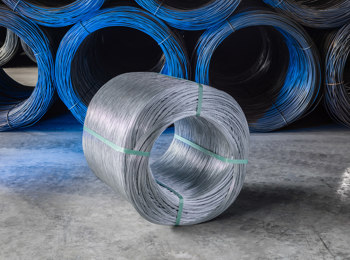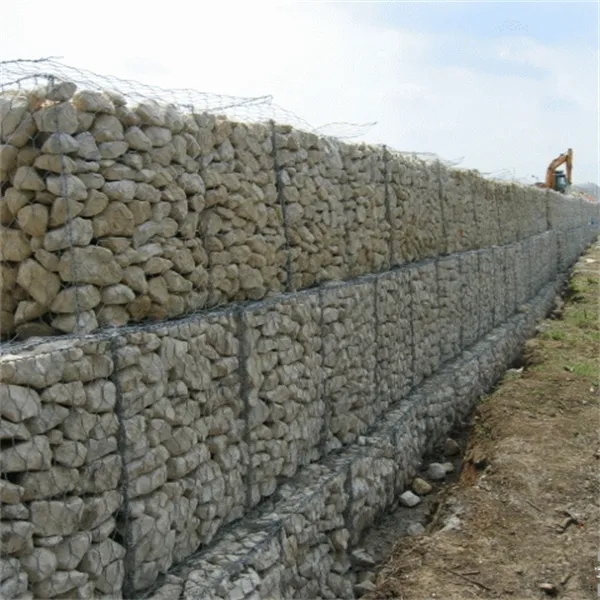2月 . 10, 2025 10:50 Back to list
gabion slope protection
Gabion slope protection has emerged as a crucial solution for those interested in effective, sustainable, and aesthetically pleasing erosion control on sloped terrains. Its application in various environments highlights a remarkable blend of engineering expertise and natural beauty, establishing it as a preferred choice for architects, engineers, and environmentalists.
In terms of installation, gabion systems are relatively straightforward and can be assembled on-site with ease. They do not require special foundations, reducing the time and cost involved in preparation and installation. Moreover, their porous nature allows water to flow through, reducing hydrostatic pressure, which is a common cause of slope failure. This permeability enhances the drainage system of the slope, providing an additional layer of protection against erosion. For professionals involved in landscaping and civil engineering, gabion solutions offer a versatile tool that combines the strength and reliability of engineered structures with the ecological and visual benefits of natural systems. They foster a sense of harmony between human interventions and the natural world, an increasingly important consideration in sustainable design practices. Moreover, advancements in gabion technology, such as polymer-coated wires and advanced assembly techniques, have further expanded their application. These innovations increase the lifespan and performance of gabion structures, making them suitable for more demanding environments, such as coastal protection and riverbank stabilization. Selecting gabion slope protection systems signals a commitment to sustainable landscape practices, drawing from centuries of expertise while embracing modern innovations. It stands as a testament to human ingenuity in harmonizing engineering prowess with environmental stewardship. When assessing an erosion control strategy's effectiveness, adaptability, and sustainability, gabions consistently deliver superior results. In conclusion, gabion slope protection merges traditional resilience with modern functionality, promoting an earth-friendly approach within the construction and landscaping industries. Its adaptability, durability, and compatibility with natural systems make it an authoritative choice for engineers and ecologists alike, seeking a reliable solution to erosion and slope management challenges. By investing in gabion systems, stakeholders are adopting a trustworthy strategy that reflects both a depth of expertise and a profound respect for the natural environment.


In terms of installation, gabion systems are relatively straightforward and can be assembled on-site with ease. They do not require special foundations, reducing the time and cost involved in preparation and installation. Moreover, their porous nature allows water to flow through, reducing hydrostatic pressure, which is a common cause of slope failure. This permeability enhances the drainage system of the slope, providing an additional layer of protection against erosion. For professionals involved in landscaping and civil engineering, gabion solutions offer a versatile tool that combines the strength and reliability of engineered structures with the ecological and visual benefits of natural systems. They foster a sense of harmony between human interventions and the natural world, an increasingly important consideration in sustainable design practices. Moreover, advancements in gabion technology, such as polymer-coated wires and advanced assembly techniques, have further expanded their application. These innovations increase the lifespan and performance of gabion structures, making them suitable for more demanding environments, such as coastal protection and riverbank stabilization. Selecting gabion slope protection systems signals a commitment to sustainable landscape practices, drawing from centuries of expertise while embracing modern innovations. It stands as a testament to human ingenuity in harmonizing engineering prowess with environmental stewardship. When assessing an erosion control strategy's effectiveness, adaptability, and sustainability, gabions consistently deliver superior results. In conclusion, gabion slope protection merges traditional resilience with modern functionality, promoting an earth-friendly approach within the construction and landscaping industries. Its adaptability, durability, and compatibility with natural systems make it an authoritative choice for engineers and ecologists alike, seeking a reliable solution to erosion and slope management challenges. By investing in gabion systems, stakeholders are adopting a trustworthy strategy that reflects both a depth of expertise and a profound respect for the natural environment.
Next:
Latest news
-
Wire Mesh Thickness Impact on Gabion Wall Load Bearing
NewsAug.12,2025
-
Ultimate Guide to Hexagonal Gabion Box
NewsAug.12,2025
-
Types of Rocks for Gabion Baskets Durability and Aesthetics
NewsAug.12,2025
-
Standard Gabion Box Sizes and Their Industrial Applications
NewsAug.12,2025
-
Easy Guide to Building Garden Gabion Cages at Home
NewsAug.12,2025
-
Drainage Solutions for Gabion Mesh Structures
NewsAug.12,2025
-
Visualizing Gabion 3D Integration in Urban Landscapes with Rendering
NewsJul.23,2025
Manufacturer of Silk Screen Products
QuanhuaProvide high-quality products and services to global customers.






